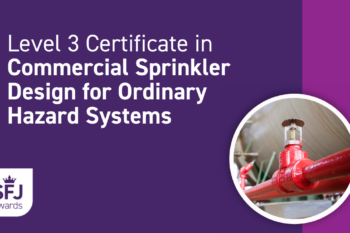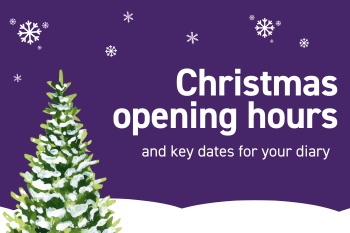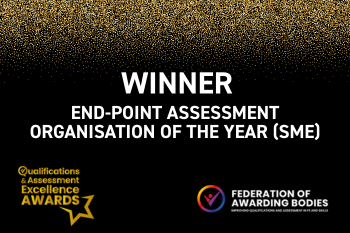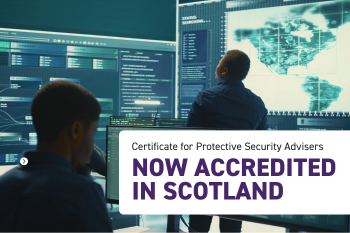Candace Miller is the Managing Director of SFJ Awards, Executive Director of the Workforce Development Trust, as well as Board Member and Lead Member for the Professional Development and Equalities Working Group of the Federation of Awarding Bodies (FAB). She recently spoke to Head of Awarding and Skills at Peridot Partners, Kristina Preston, about equality, diversity and inclusion (EDI) in the awarding sector.
Why are you personally so passionate about EDI and how can the awarding sector do more in this area?
Firstly, I want to turn the question around and ask, “why isn’t everybody passionate and concerned about equality, diversion, and inclusion?”
Everyone is diverse. Not just in terms of the protected characteristics, but also in terms of our backgrounds, upbringing, abilities, socioeconomic standing, stages we’re at in our lives, and so on.
All of us want to be treated equally, we all want to feel like we belong, we all want to feel respected and included at work and in our family, social and community lives.
I’m confident that none of us would want to be discriminated against based on any personal characteristics, so why should we accept it happening to anyone else?
Specifically, in the awarding sector, awarding and assessment organisations really do have a significant impact on education and training provision.
We take that very seriously, as do the regulators. So, it is imperative that assessment and accreditation materials are inclusive so that all learners are equally able to demonstrate the knowledge, skills and behaviours they’ve developed through various pathways of learning.
What are the most important things awarding organisations need to be thinking about when it comes to EDI?
Awarding bodies tend to have a small workforce and are highly specialised, so it’s important to attract talent from across the entire population and that awarding bodies are seen as a place where everyone belongs.
Generally, the pathway into awarding bodies comes about serendipitously. For instance, I hold a degree in zoology and my first job was as an Educational Officer at a zoo. I quite liked the education side of things, so my next job was basically administration within an awarding organisation. And the rest, as they say, is history.
From there I moved from job to job, changed from awarding body to awarding body and have always had a wonderful career – I still am having a wonderful career!
That being so, I think comes down to being able to recruit the talent that we need and demonstrating the diversity of activities that they can undertake as part of a career in awarding bodies.
People are often unaware of how diverse and rewarding a career in the sector can be, so it’s vitally important that awarding bodies shout a bit louder about what they can offer. By doing so we will help to facilitate diversity in our workforce and ultimately drive EDI in the sectors that we support.
So, recruitment is one aspect of improving equality and diversity, how does inclusion factor in? How should inclusion be defined, and what can organisations do to foster a more inclusive environment?
One of the very best descriptions I’ve heard put forward is by diversity and inclusion expert Verna Myers: “Diversity is being invited to a party; inclusion is being asked to dance.”
I think being inclusive is a choice; it’s about taking active steps to ensure that everyone isn’t just invited but supported too.
If somebody has made it through the process of recruitment and selection, they’ve already proven they have what it takes. Now it’s up to you and your teams to help them really feel part of things.
Sometimes the way that we present ourselves can inadvertently create barriers. Think about the language and imagery that you use externally. Think about the internal social environment of the organisation.
It is so easy to inadvertently exclude people through what we say and do, but often difficult to identify when we have done that.
Be active and aware of people who look like they are joining in but aren’t necessarily being actively included.
Inclusion must be an active and ongoing behaviour that doesn’t benefit from a ‘one size fits all’ approach.
What are some small steps that have a big impact on an organisation’s inclusivity strategy?
There are four main steps organisations can take to create a welcoming and inclusive culture.
Firstly, think about the language and imagery you use in your recruitment drive.
There are some terms that can inadvertently put people off from applying for a role. Words like ‘active’ or energetic’ might hint that you are looking for younger applicants. Studies have shown that words such as ‘competitive’, ‘leader’ and ‘confident’ can be more appealing to males, while ‘responsible’, ‘dependable’ and ‘committed’ can appeal more towards women.
Neutral language expands the talent pool you appeal to and show that you are open to people bringing their whole selves to work. There are online language checkers that you can use to make this easy and quick.
Secondly, be authentic.
Many organisations make public statements about inclusivity, but you must be able to show how you act on it as well. If you look like you’re jumping on the bandwagon without taking real action, it will have the opposite effect to what you are trying to achieve.
Listen to your staff and stakeholders and develop a vision of how you want your organisation to be perceived then build a roadmap of where you want to go.
Set goals and deadlines and continuously collect data as you go. Be realistic with your timelines and have a clear picture of how reaching smaller milestones will get you closer to your overarching goals.
What words of warning or caution do you have for organisations?
Don’t make assumptions. Look for evidence and use it to make informed decisions.
Don’t assume that everything is okay because nobody has complained – ask, find out – what would make things even better?
Listen to share, listen to learn and understand that none of us knows everything. It’s through communication that we get to a better understanding, engagement and awareness of all the different strengths that come through having a much more diverse and inclusive workforce.
Foster an environment where people can have safe conversations and where they can talk openly.
Don’t fall into the trap of thinking that including someone or something automatically means you’re excluding someone or something else. Inclusion is additive – it’s building on, it’s adding to things.





